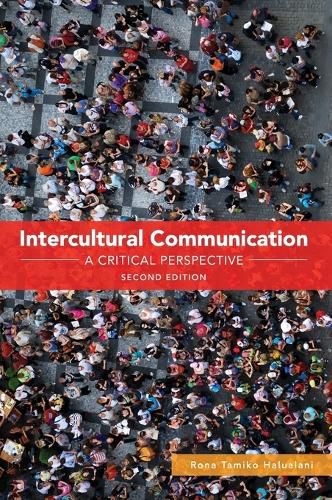Readings Newsletter
Become a Readings Member to make your shopping experience even easier.
Sign in or sign up for free!
You’re not far away from qualifying for FREE standard shipping within Australia
You’ve qualified for FREE standard shipping within Australia
The cart is loading…






This title is printed to order. This book may have been self-published. If so, we cannot guarantee the quality of the content. In the main most books will have gone through the editing process however some may not. We therefore suggest that you be aware of this before ordering this book. If in doubt check either the author or publisher’s details as we are unable to accept any returns unless they are faulty. Please contact us if you have any questions.
Intercultural Communication: A Critical Perspective is grounded in a framework based on key dimensions of power in relation to intercultural communication. A macro-micro focus is applied throughout the book to theorize the ways in which larger structures of power intermingle and reconfigure private/one-on-one encounters and relations between different cultures, both domestically and internationally. The textbook introduces students to both the hidden and visible aspects of power that constitute intercultural communication encounters and relations.
The book begins by introducing the concept of intercultural communication and demonstrating how ubiquitous it is in our everyday lives. Subsequent chapters address the ties between culture, power, and intercultural communication; how powerful ideologies develop from cultural views and ways of life; and the interplay of cultural representation and speaking for or about a cultural group. Students learn the ways in which individuals and structures of power shape identity, how different structures and groups remember and forget the past, and how racialization relates to intercultural communication. The final chapters explore power dynamics with regard to globalization, intercultural relationships and desire, and our roles in intercultural communication.
The second edition features new and updated research studies and illustrative examples throughout. Every chapter has a new narrative opening, introducing new identity positionalities and characters located in different cultural contexts, and connecting to the ACT Framework for Intercultural Justice to highlight agency, resistance, and structural change.
$9.00 standard shipping within Australia
FREE standard shipping within Australia for orders over $100.00
Express & International shipping calculated at checkout
This title is printed to order. This book may have been self-published. If so, we cannot guarantee the quality of the content. In the main most books will have gone through the editing process however some may not. We therefore suggest that you be aware of this before ordering this book. If in doubt check either the author or publisher’s details as we are unable to accept any returns unless they are faulty. Please contact us if you have any questions.
Intercultural Communication: A Critical Perspective is grounded in a framework based on key dimensions of power in relation to intercultural communication. A macro-micro focus is applied throughout the book to theorize the ways in which larger structures of power intermingle and reconfigure private/one-on-one encounters and relations between different cultures, both domestically and internationally. The textbook introduces students to both the hidden and visible aspects of power that constitute intercultural communication encounters and relations.
The book begins by introducing the concept of intercultural communication and demonstrating how ubiquitous it is in our everyday lives. Subsequent chapters address the ties between culture, power, and intercultural communication; how powerful ideologies develop from cultural views and ways of life; and the interplay of cultural representation and speaking for or about a cultural group. Students learn the ways in which individuals and structures of power shape identity, how different structures and groups remember and forget the past, and how racialization relates to intercultural communication. The final chapters explore power dynamics with regard to globalization, intercultural relationships and desire, and our roles in intercultural communication.
The second edition features new and updated research studies and illustrative examples throughout. Every chapter has a new narrative opening, introducing new identity positionalities and characters located in different cultural contexts, and connecting to the ACT Framework for Intercultural Justice to highlight agency, resistance, and structural change.